Casio Exilim EX-H20G Review
Casio Exilim EX-H20G
Casio's GPS-incorporating 'hi zoom' snapshot features a 10x optical zoom and 14.1 megapixel resolution. Will its purchase help steer your photography in the right direction?
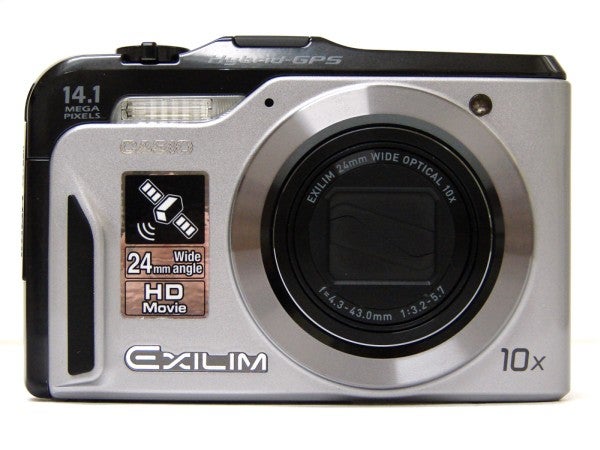
Verdict
Pros
- GPS
- Long battery life
- Easy point and shoot operation
- 10x zoom lens (24-240mm)
Cons
- GPS makes it pricey
- No manual exposure controls
- Only middling image quality
Key Specifications
- Review Price: £299.99
- GPS
- 10x zoom lens (24-240mm)
- 14.1 megapixel sensor
- 360 degree panorama mode
By virtue of its 10x optical zoom, the 14.1 megapixel Casio Exilim EX-H20G, falls within Casio’s ‘hi zoom’ product category. Updating the EX-H10, it also packs in sensor-shift image stabilisation to help prevent blur from hand wobble at longer focal lengths. However, with most competing camera manufacturers also squeezing in larger than you’d expect zooms into slim bodies, this latest Casio is arguably more noteworthy for incorporating a GPS antenna above its lens, hence the model’s ‘G’ suffix. 
Presently only a small handful of rivals, including Samsung’s WB650, bigger brother to our recently reviewed WB600, offer GPS facilities. So this is one way in which the EX-H20G can navigate itself clear of the crowd.
Casio’s on-board GPS isn’t just any old steerage system, but rather what it terms ‘hybrid GPS’. This translates as the camera including a motion sensor alongside integral compass. This is so, says Casio, the EX-H20G can continue to plot your position even if the GPS signal is lost. Should you disappear down an open man hole cover for example, the camera will ‘count’ the number of steps since your last known position. Or, if you’d rather, the GPS facilities can be deactivated via the camera’s Set Up menu folder.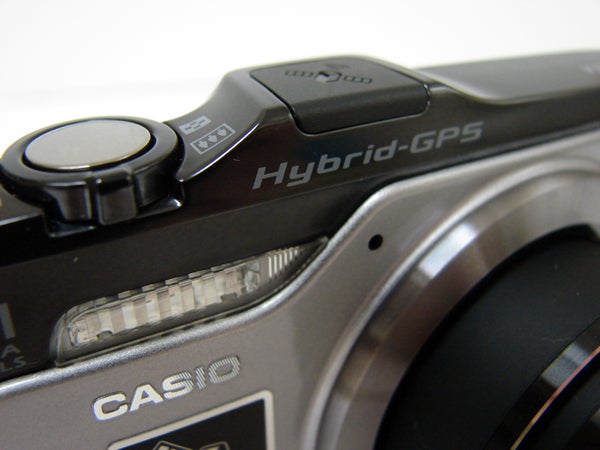
Such cleverness inevitably commands a premium, though a manufacturer’s suggested asking price around the £330 mark feels rather steep. Particularly when its non-GPS sibling in the otherwise largely identical EX-H15 (14.1MP and 10x zoom) retails for a cool £100 less. With current online prices falling somewhere in the middle, is this a premium worth paying? And is the EX-H20G the potentially all-encompassing ‘travel zoom’ companion that it appears to be on paper?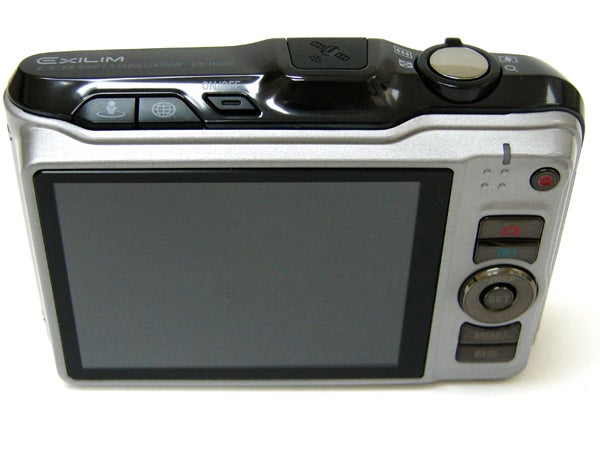
The angular compact camera certainly ticks those proverbial boxes with its attendant headline specification. The 2.7in screen packs in an impressive 460,800 pixels, which places it on a par with enthusiast models for clarity of vision. Added to the mix is the expected ability to shoot 720p HD video clips at a smooth 30 frames per second. Unlike the EX-H15, the EX-H20G further adds mini HDMI output, for hooking the camera up to your flat panel TV. Battery life is noteworthy via the fact that around 600 shots are provided by a full charge. Many competing models barely manage a third of that.
Although issued under the ‘Exilim’ brand, with the inference of the slender chassis that Casio arguably pioneered back in 2002, the extended focal range ensures that the EX-H20G is inevitably bulkier than the average 3x, 4x or 5x zoom compact. That, and the fact that its blocky body is also slightly reminiscent of its G-shock watches, subconsciously helps the camera to feel reassuringly solid when gripped, as does the fact that construction appears more metal than plastic. Although resembling a toughened camera, in fact it’s neither shockproof nor waterproof; a shame as these are features which might have further added to compatibility with a traveller’s lifestyle. Dimensions are officially 102.5×67.5×28.8mm and the Exilim has a manageable weight of 216g, so it will slip easily into most pockets.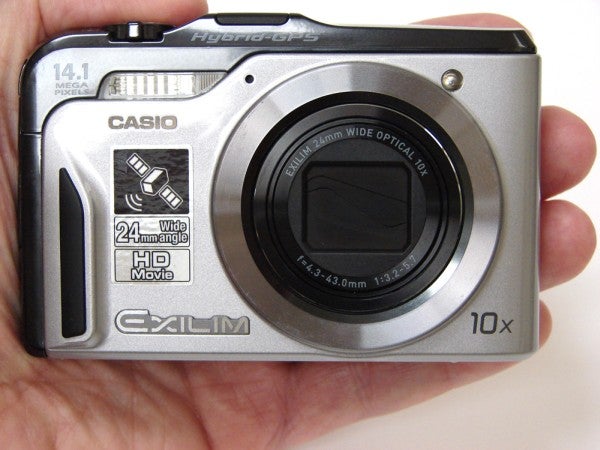
As a minor concession to a handgrip, there’s a raised modelling knife-shaped section at the bottom left hand corner of the faceplate, into which it’s possible to dig a couple of fingernails. Four teeny raised nodules on the backplate, adjacent to a useful dedicated video record button, provide a point of purchase for the thumb. All told, it feels more comfortable to shoot two-handed. However, if you like to hold your camera with your left thumb on the back, you’ll find little room to fit it so will inevitably end up resting it on the edge of the 3-inch, 4:3 aspect ratio LCD screen, smearing it with prints.
As well as standard shooting information, the camera’s screen reveals its GPS credentials by also displaying your location in text on a bulletin board type set up at the bottom. This was slightly off-message in informing us we lived in the neighbourhood bordering our own, but could potentially come in useful if you awake in the back of a cab miles from anywhere after a heavy night.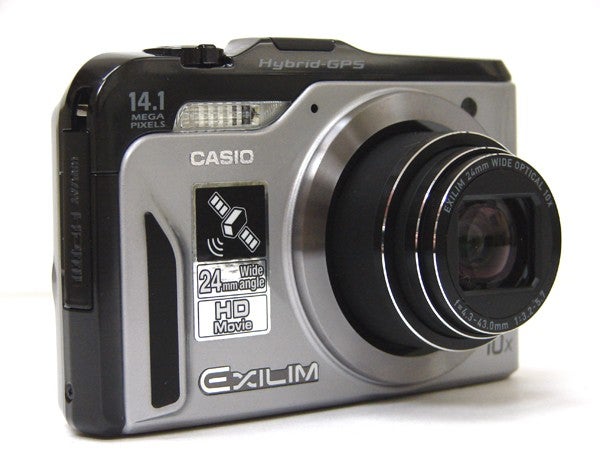
For everyday pointing and shooting we get a choice of two auto modes, regular auto and image enhancing (and marginally slower) Premium Auto. Both are located with a press of the ‘BS’ (Best Shot) button on the camera back, existing here in lieu of the more regular mode dial. In total there are a whopping 27 ‘BS’ options covering a wide range of common subjects, though mostly biased toward photographing people or landscapes. 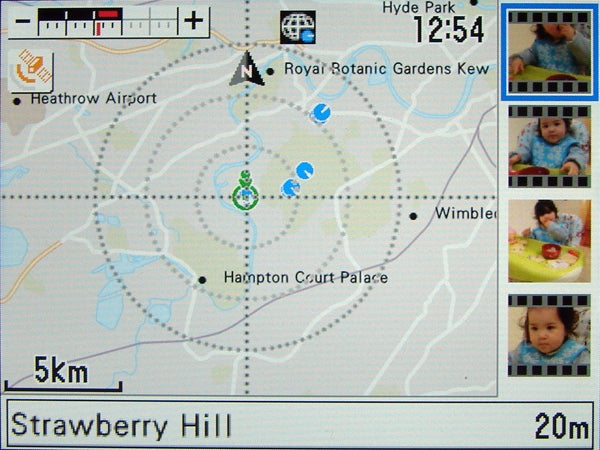
The overall control layout is fairly simple. The largest button is the shutter release, which is encircled by a lever for adjusting the zoom. The adjacent top plate buttons are the on/off control plus a further two that pertain to the GPS functionality. These are the ‘map’ button, denoted by the icon showing the baseball-shaped globe, and next to it the ‘current location’ button. A press of the former and the user is presented with a miniature world map, that, with a nudge of the zoom lever, it’s possible to zoom into and enlarge sections of – a bit like with Google Maps, albeit with a lot less detail. You can get within a few miles of your actual location however, whereupon the camera flags up local points of interest – Kew Gardens and Heathrow Airport in our case – that might be worth a photo. It feels slightly gimmicky, though is sure to find favour with those who like their gadgets. Latitude and longitude coordinates are also embedded with each image file.
The camera powers up from cold in just under three seconds, which isn’t the fastest ever. However once up and running, timings improve. With a half press of the shutter release there’s the briefest of pauses whilst focus and exposure are determined, auto focus points highlighted in green with a chirp to signal the user is free to press down fully and take the shot. A top 14 megapixel resolution JPEG is committed to memory, here removable SD card, in around two seconds, which is about on par.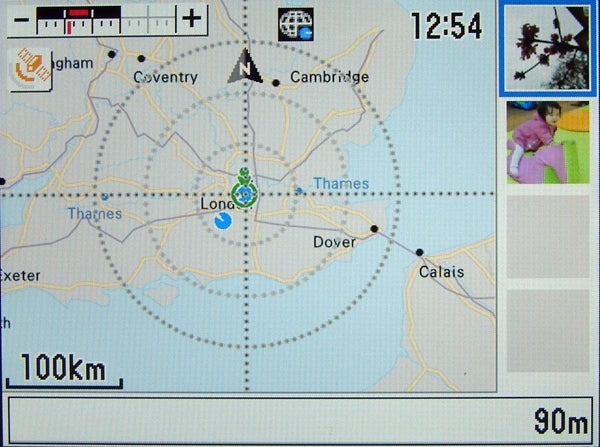
With a press of the ‘set’ button, key shooting options are presented in a toolbar that runs down the right hand side of the camera’s screen, each setting highlighted as the user tabs up or down, via the intuitive four way control pad at the rear. It’s here we find the ability to adjust light sensitivity between ISO80 and ISO3200, pick resolution and image aspect ratios, and even get a manual focus option. This provides the ability to pick a distance between 15cm and infinity for the camera to zero in on, at which point a live histogram also appears to facilitate an accurate exposure.
Among the Casio EX-H20G’s Best Shot options we were most impressed with the panorama feature. This fires off a machine gun-like continual burst as the user pans with the camera through a full 360°, its nearest competitor in terms of its simplicity and effectiveness being Sony with its Sweep Panorama technology. The result, similarly, is an automatically generated, single elongated image. OK, so the Casio version doesn’t also offer the ability to generate a 3D version viewable on a suitable TV, but it’s another way in which the camera reaches out to the traveller wanting to fully take in the sights around them.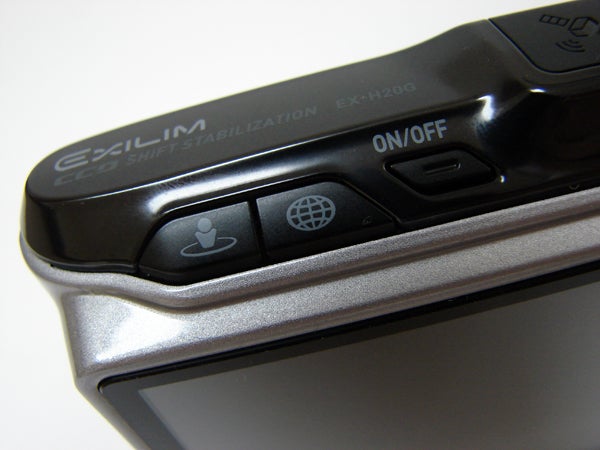
In terms of being able to alter framing of your shots in a hurry, the EX-H20G’s zoom powers through the entirety of its focal range in just under two seconds, which isn’t bad at all. However it’s a bit of a let down that the zoom is disabled when recording video, even if it does save the footage from the lens’ distracting noise. We did like the act however that pressing the record button immediately commences filming no matter which alternative Best Shot mode is selected at the time. It’s one advantage of not sticking the video option on a conventional shooting dial or wheel set up. The screen display automatically narrows to provide a cropped 16:9 aspect ratio image for video capture, more closely mirroring how the results will appear when viewed back on a TV, or your computer screen.
In terms of stills quality, we did as expected get the odd soft shot when shooting handheld at the extremities of the zoom, but generally the Casio acquitted itself well, in delivering warm, well saturated colours even on the dullest of winter days.
Usual compact camera bugbears such as loss of corner definition at maximum wideangle setting – again not wholly unexpected, given the ultra wide 24mm setting – plus chromatic aberrations between areas of high contrast are present and incorrect if you want to look closely for them. But most of the mass market target audience for the EX-20G will simply be pleased with the ability to point and shoot and get perfectly usable results, and consistently too.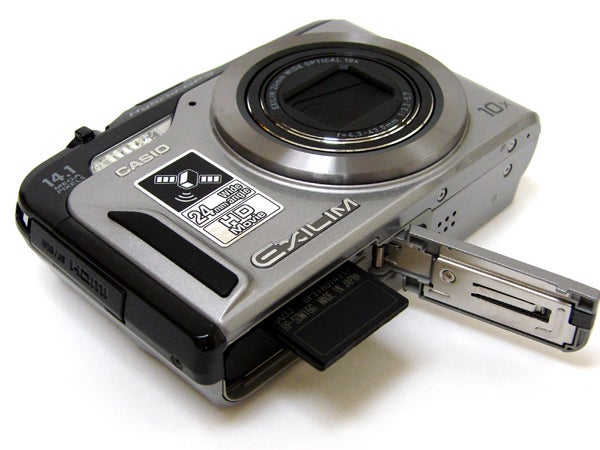
For low light photography we managed to get a decent return at ISO400 and below, noise intruding and detail softening at ISO800, though up to ISO1600 is still, we’d argue, worth shooting at, if pushed. At top whack ISO3200, as our test samples show, detail has softened across the image and it’s beginning to take on a painterly effect. But again, this is no worse a performance than other big zoom compacts, such as Samsung’s competing WB600. And particularly so, given the high-ish 14 million pixels on offer, crammed onto a modestly sized 1/2.3-inch CCD sensor.
”’Verdict”’
The travel zoom market has been in growth of late, with even formerly humble pocket models now boasting a 15x reach to further distance themselves from the latest smartphones. But rather than trying to trump competitors when it comes to zoom power, Casio has here added the extra of GPS to a still versatile 10x optical reach. Though a bit of a gimmick surely for most amateur photographers, it works up to a point, and helps earmark the camera as a possible purchase for those who love their gadgets as much as their photography.
On the down side, it is disappointing that the full extent of the zoom cannot be used for video as it can for stills, and that Casio insists on cramming information in several different languages on each page of its manuals, making them hard to decipher in a hurry. But, that aside, we actually have very few black marks to place against the EX-H20G, other than the aforementioned high price. Shop around however and less demanding photographers may well find this particular Exilim stacks up well as a possible travel companion. Though, we’d argue, if you don’t need the GPS, not quite as well as a sharper compact system camera like an Olympus Pen, Panasonic GF or beginner’s DSLR might.
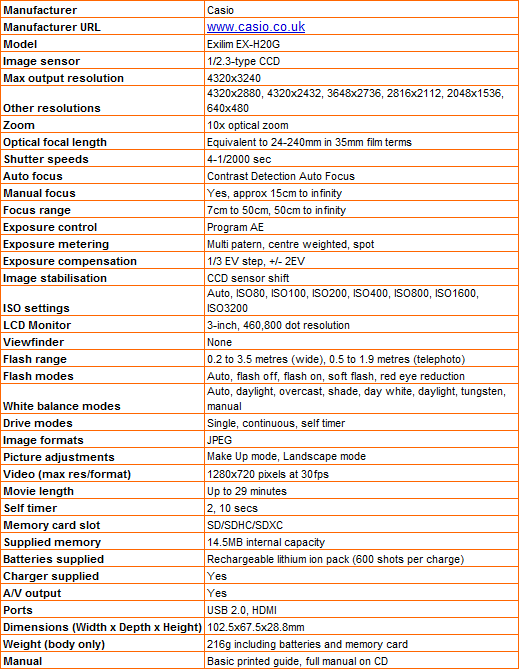
”’A selection of images taken at the camera’s incremental light sensitivity settings, using only available daylight.”’
—-
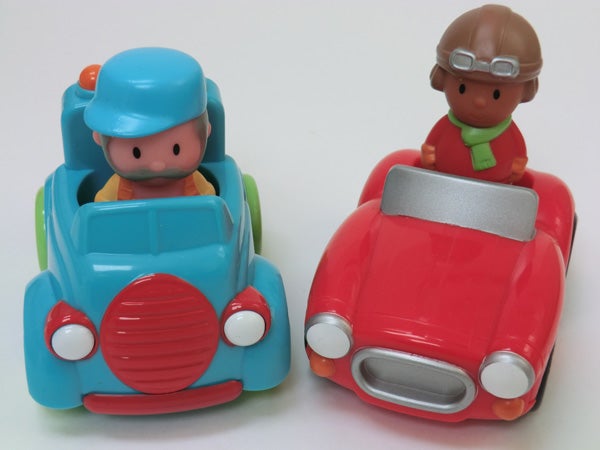
—-
Shooting with the EX-H20G set to Auto ISO, it has chosen a setting equivalent to ISO400 to do the job. A good choice as this has produced a relatively clean, noise free result.
—-
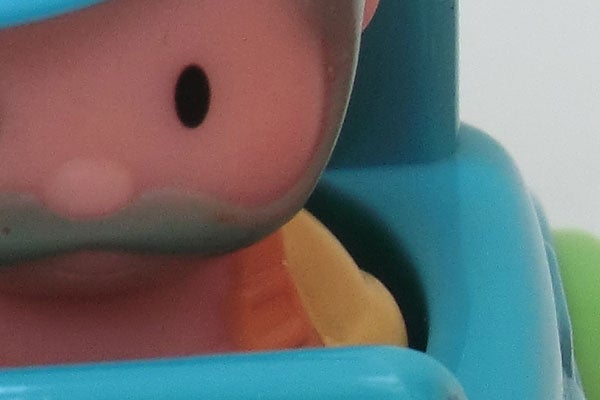
Even full frame at ISO80 – starting out lower than most – unsurprisingly, all is well with the globe trotting Casio’s performance
—-
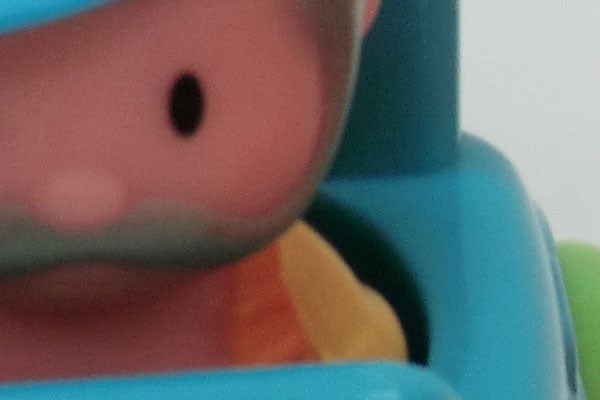
Same shot at ISO100 and a barely discernible difference for noise/grain.
—-
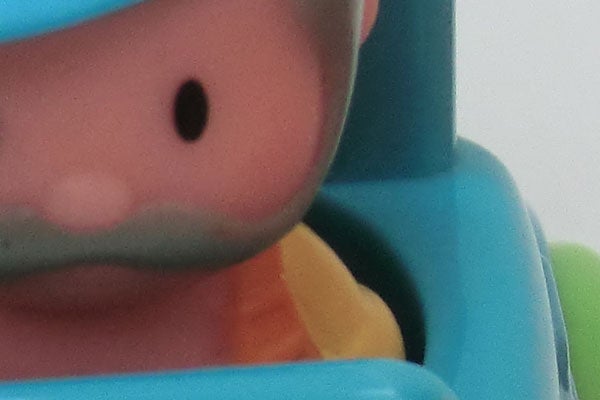
Same lack of noise to report at ISO200, so the camera is performing as well as we would expect for its point and shoot class.
—-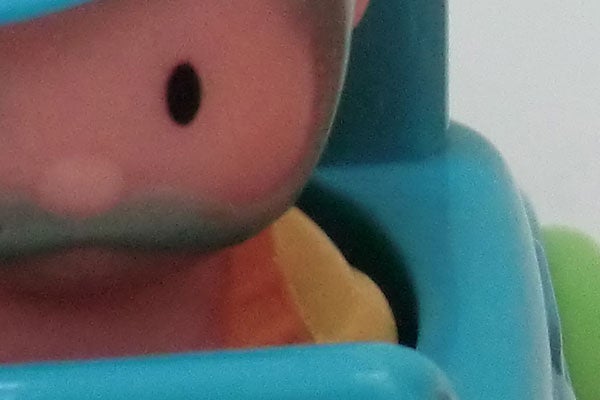
We’re at ISO400, usually the setting at which noise begins to creep in on if we’re unlucky. Here we’re relatively clean, crisp and clear.
—-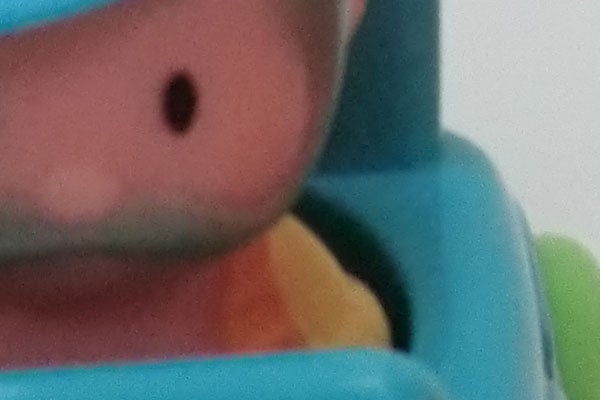
Noise is becoming more pronounced when examining shadow detail at ISO800, and we’re also loosing definition as the image is softer overall.
—-

A softer image again at ISO1600, even when viewed full frame. But we’d still be happy reaching for this option when pushed.
—-

At top ISO3200 setting we’re getting more softness still, the result beginning to lose the look of a digital photograph and instead take on a watercolour-like appearance.
—-
”’A more general selection of unadjusted test shots are revealed on this page and next to act as an evaluation of the Casio Exilim EX-H20G in a variety of shooting conditions.”’
—-
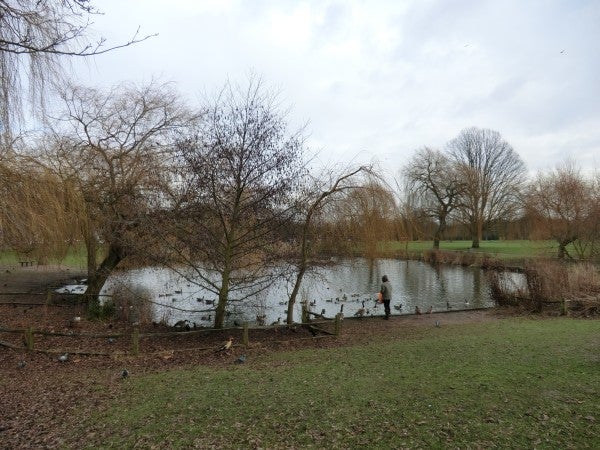
A maximum 24mm equivalent wide angle shot taken with the Casio, any possible instance of barrel distortion well disguised by the natural setting. Commendably sharp and evenly exposed too, albeit with some purple fringing creeping into frame where three branches meet largely featureless skies.
—-

A second image taken from the same vantage point, but this time at maximum telephoto setting, and handheld. There is some image softness visible at this setting, but this was nonetheless the sharpest of two attempts.
—-
![]()
A shot taken with the camera’s panorama Best Shot mode, which automatically produces a single elongated image file, without any nasty overlaps as well – unless you’re looking particularly closely. Whilst not the very best in terms of end image quality it’s a fun and effective feature.
”’Here are some general test shots taken with the EX-H20G to give an idea of performance ability when it comes to image quality, dynamic range, colour rendition and performance at various focal ranges.”’
—-

This image, as well as being of a rather cute subject, shows the EX-H20G to the very best of its oint-and-shoot capabilities. Colours are warm but not unnaturally so, and this shot taken at the telephoto end of the lens is also nicely sharp to boot, being the best of a couple of attempts.
—-
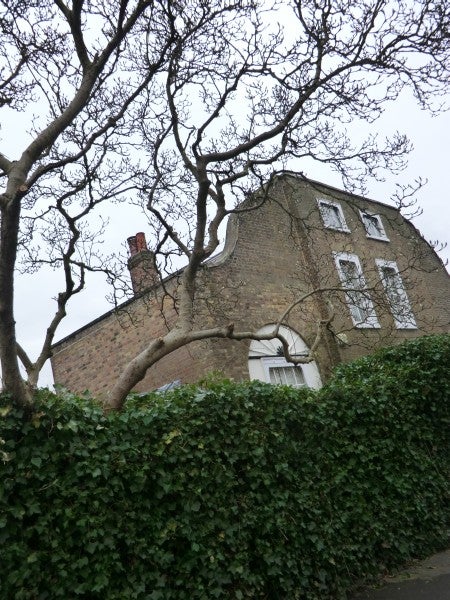
A gloomy day, but a good level of detail captured here, the house really standing out against a flat featureless sky, that has again given rise to some obvious pixel fringing around the branches of the tree in the foreground.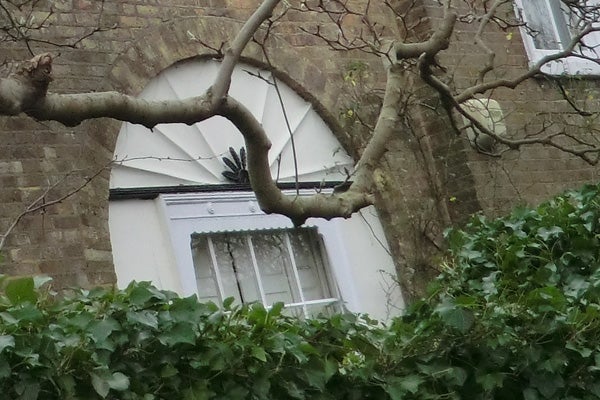
—-
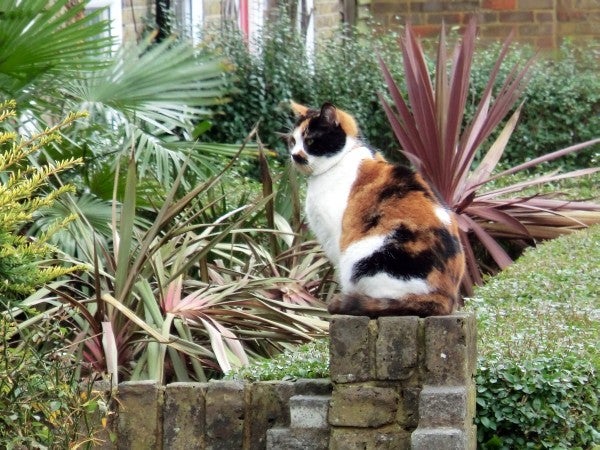
Another quintessentially English subject – the moggie on a wall – taken at maximum telephoto setting. Again, colours are richly saturated, even if the overall image suffers from being a little softer than we’d have hoped for courtesy of being taken at full zoom.
—-
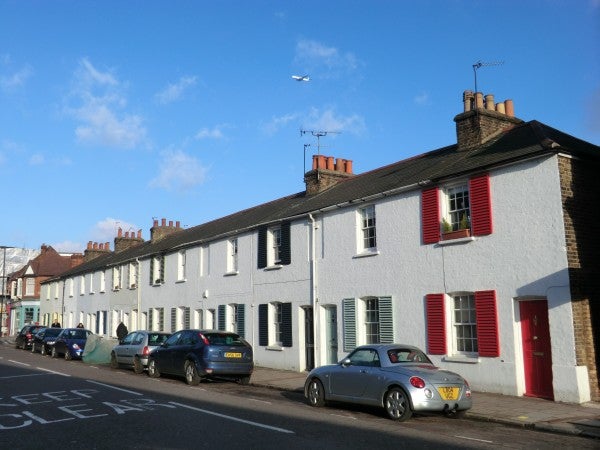
A rare bit of winter sunshine and we’ve an image displaying crisp colours that look as though they might leap from the screen. This looks as though we might have selected the Casio’s vivid colour setting – if it had one – but in fact this is the factory default, and particularly flattering it is too.
—-
Trusted Score
Score in detail
-
Value 7
-
Image Quality 8
Features
| Camera type | Digital Compact |
| Megapixels (Megapixel) | 14.1 Megapixel |
| Optical Zoom (Times) | 10x |
| Image Sensor | 1/2.3-type CCD |
| Optical focal length | Equivalent to 24-240mm in 35mm film terms |
| Shutter speed | 4-1/2000 sec |
| Auto focus | Contrast Detection Auto Focus |
| Manual focus | Yes, approx 15cm to infinity |
| Max output resolution | 4320x3240 |
| Other resolutions | 4320x2880, 4320x2432, 3648x2736, 2816x2112, 2048x1536, 640x480 |
| Focus range | 7cm to 50cm, 50cm to infinity |
| Exposure control | Program AE |
| Exposure metering | Multi pattern, centre weighted, spot |
| Exposure compensation | 1/3 EV step, +/- 2EV |
| Image Stabilisation | CCD sensor shift |
| ISO settings | Auto, ISO80, ISO100, ISO200, ISO400, ISO800, ISO1600, ISO3200 |
| LCD Monitor | 3-inch 460,800 dot resolution |
| Viewfinder | None |
| Flash range | 0.2- 3.5 metres (wide), 0.5-1.9 metres (telephoto) |
| Flash modes | Auto, flash on, flash off, soft flash, red eye reduction |
| White balance modes | Auto, daylight, overcast, shade, day white, daylight, tungsten, manual |
| Drive modes | Single, continuous, self timer |
| Image formats | JPEG |
| Picture adjustments | Make Up mode, Landscape mode |
| Video (max res/format) | 1280x720 pixels at 30fps |
| Movie length | Up to 29 minutes |
| Self timer | 2, 10 secs |
| Memory card slot | SD/SDHC/SDXC |
| Supplied memory | 14.5MB internal capacity |
| Batteries supplied | Rechargeable lithium ion pack (600 shots per charge) |
| Charger supplied | Yes |
| A/V output | Yes |
| Charging/Computer Connection | USB 2.0 |
| HDMI | Yes |
| AV Out | Yes |
| Manual | Basic printed guide, full manual on CD |
Physical Specifications
| Dimensions Width (Millimeter) | 102.5mm |
| Depth (Millimeter) | 67.5mm |
| Weight (body only) (Kilogram) | 216g including batteries and memory cardkg |

